Our environmental stewardship group is known as “Free the Fern”, as we remove the invasive plants to free ferns and other native plants.
I thought it would be fitting if I take a bit of time to introduce some of our native west coast ferns.
All the following photos were taken of ferns that our in our Douglas Fir Teaching Garden, just east of the Kinross Creek Housing Co-op on the Red Alder Trail in South Vancouver.
Western sword fern
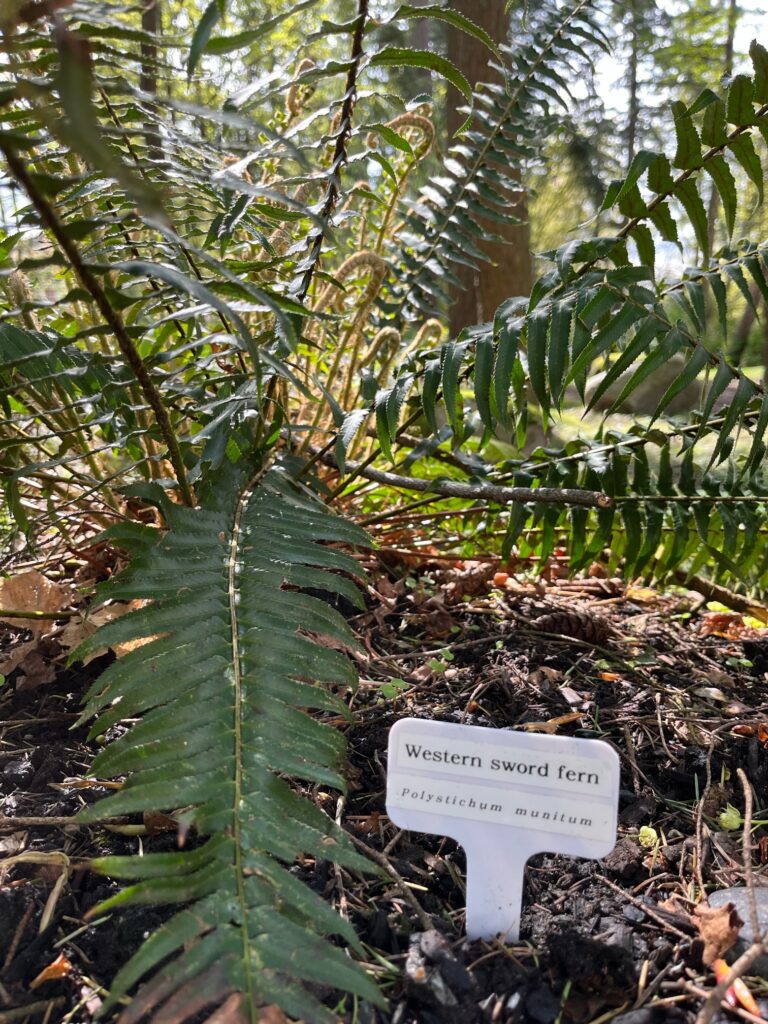

The Western sword fern is the fern that people are most familiar with seeing in Vancouver. This evergreen perennial arises from a short, stout rhizome. In the spring you see the new fiddleheads growing. Each frond is long and pointed, with a shape reminiscent of a sword. While the fiddleheads are not considered edible, the roots are a traditional indigenous food, often being consumed raw or boiled in the spring.
Lady fern
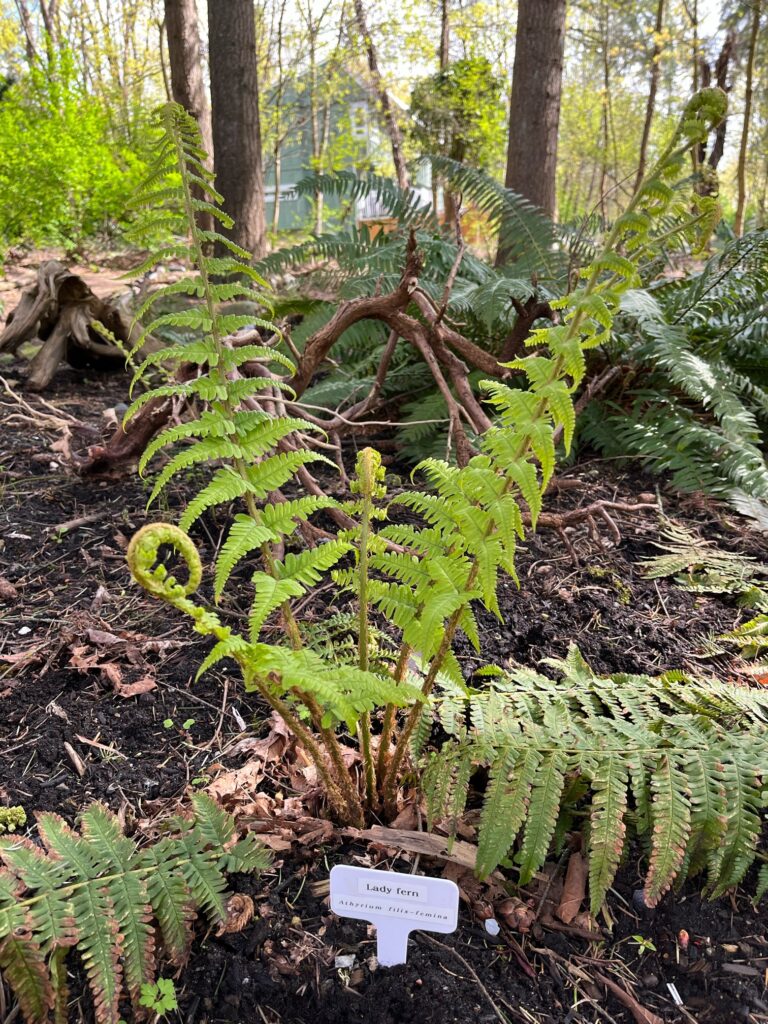

Lady fern, unlike the evergreen sword fern, are deciduous. In the spring you can see the bright green fiddleheads open into new fronds. The fronds are broadest in the middle and gradually narrow both at the base and at the top. Lady fern fiddleheads can be eaten after careful cleaning and a blanching in boiling, salted water.
Bracken fern
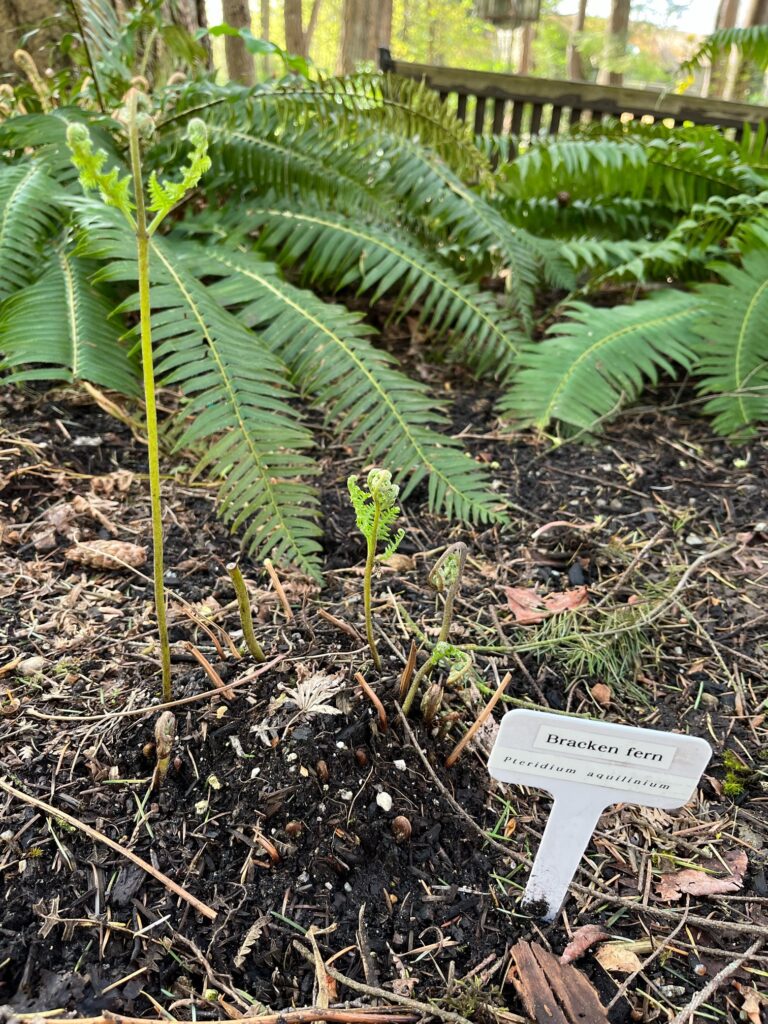
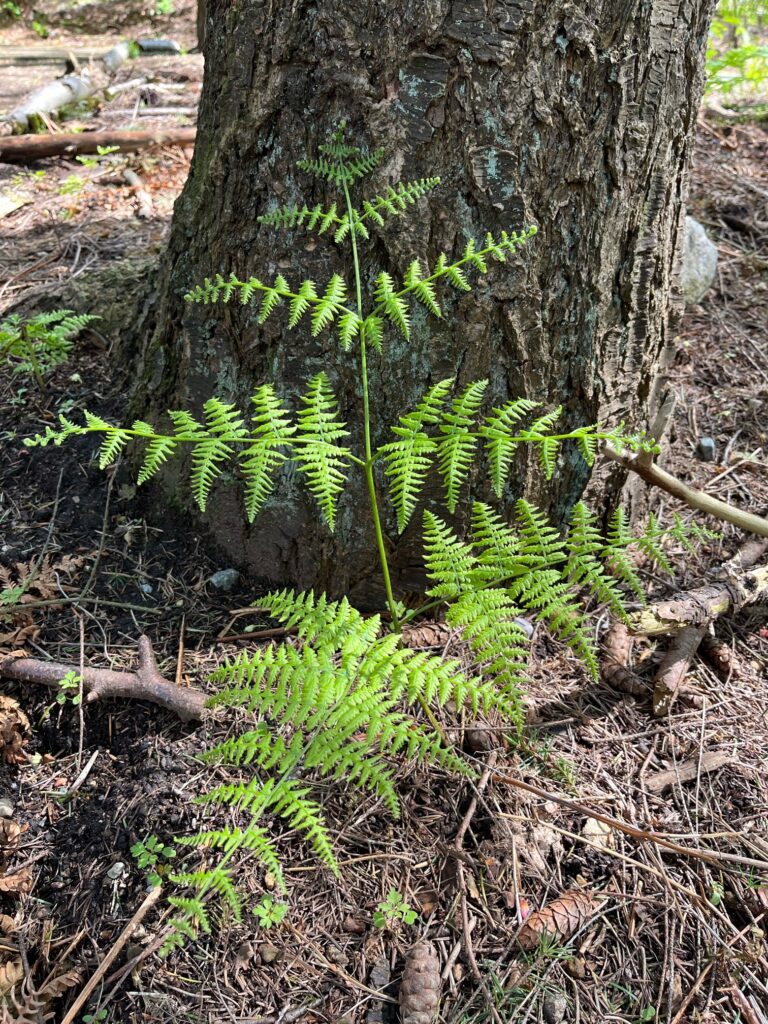
Bracken fern, like the lady fern, are also deciduous. But, unlike other native ferns, the bracken fern fiddleheads unfurl to form a single central stem. From the central stem, grow triangular, 3-pinnate, fronds. You can find this fern popping up in the spring in the wild spaces of trails, growing over other native plants, such as salal and native blackberry. Bracken fiddleheads can also be consumed, if prepared safely.
Oak fern
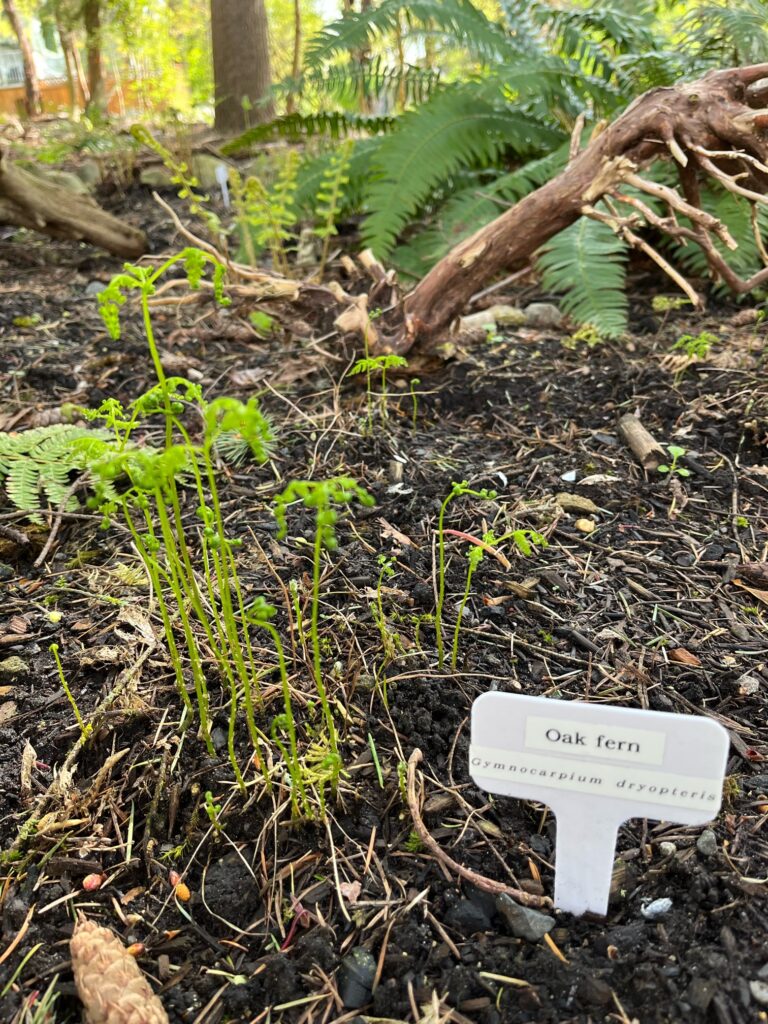
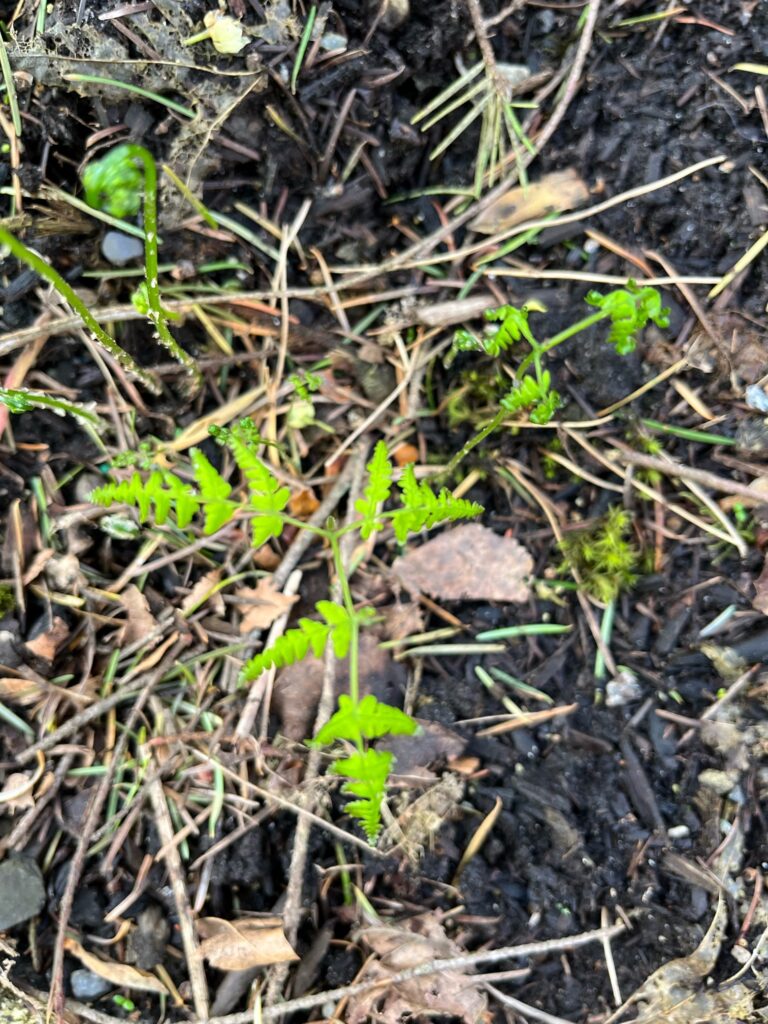
Oak fern is the smallest (and cutest!) of the deciduous perennial ferns native to BC. Its fronds measure just 10-35cm in length. The oak fern arises individually at spaced intervals from long creeping rhizomes, usually in large colonies. At the top of the stem is a single compound leaf (frond) though it appears like a whorl of 3 leaves.
Western maidenhair fern

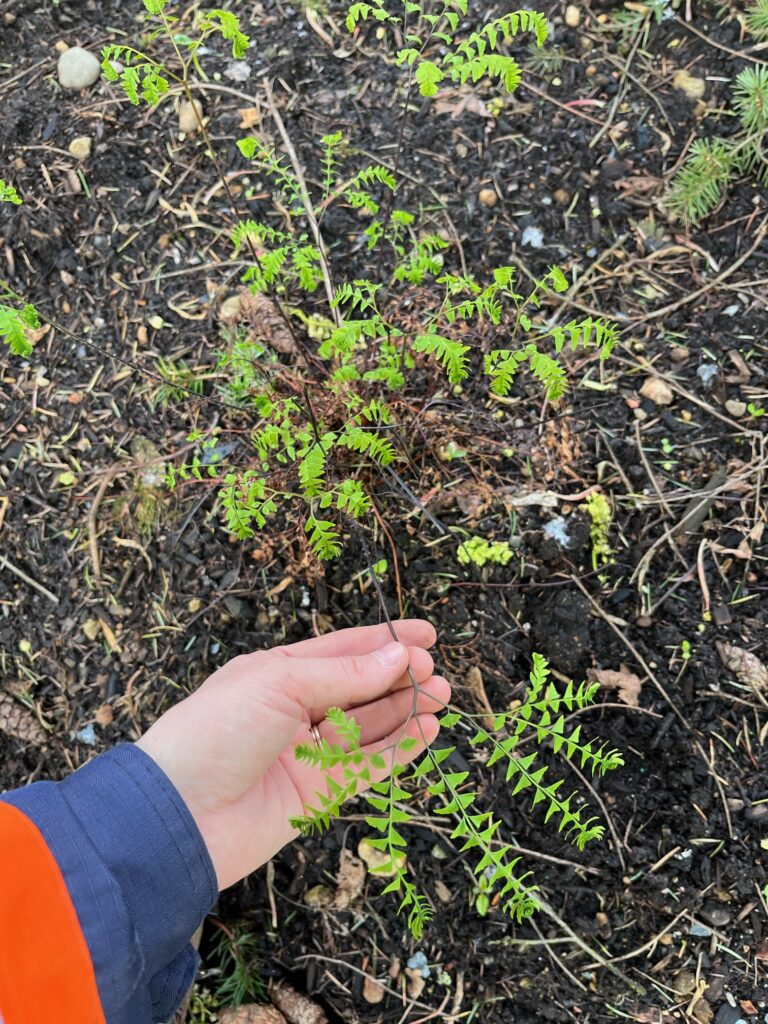
The Western maidenhair fern is another native deciduous perennial fern. Its stems are very dark, nearly black and the fern fronds on the stems tip grow in a fan shape. This is one of the most delicate looking of the ferns, with the fronds being said to resemble a “maiden’s hair”.
Spiny wood fern
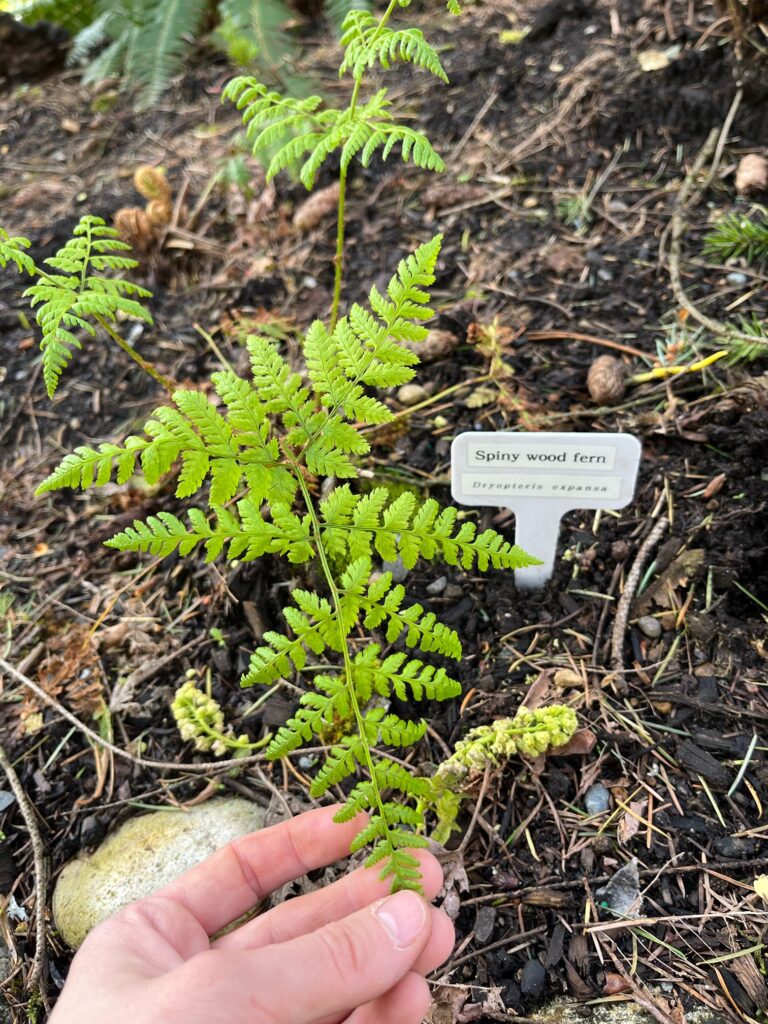
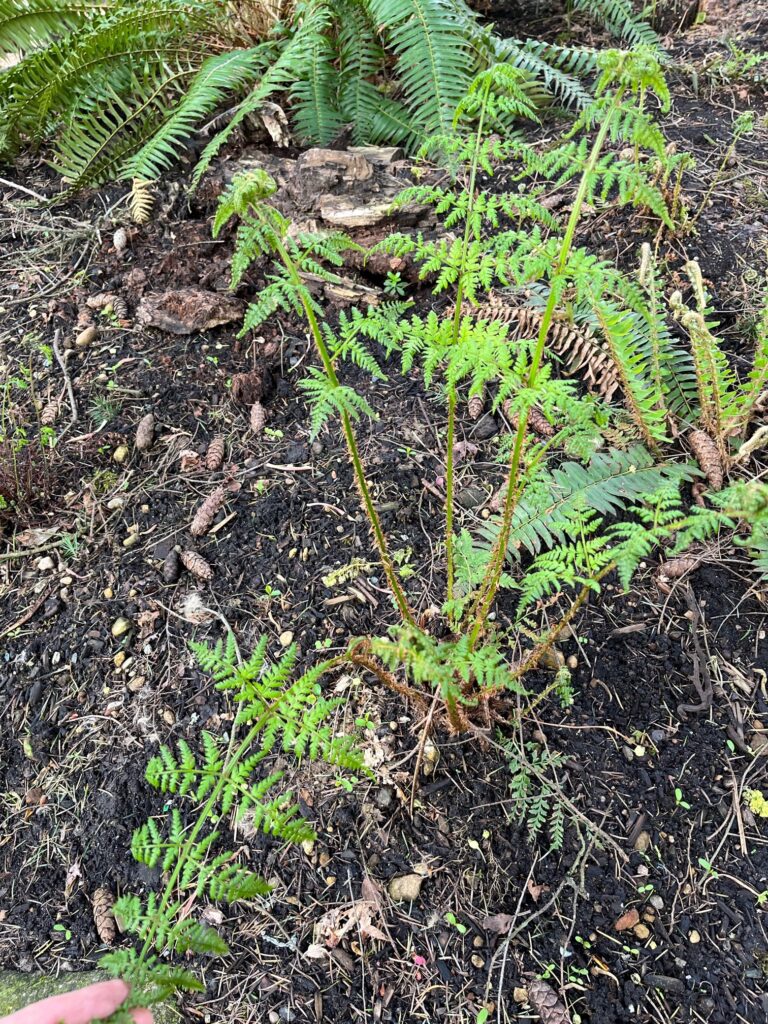
The spiny wood fern could be mistaken for a lady fern. Both are deciduous perennials with fronds that grow up from a central point. However, the shape of each frond in the spiny wood fern is distinctly triangular, while the lady fern fronds are tapered at the tip and base. The roots of the spiny wood fern are bitter when consumed raw, but develop a sweet taste, reminiscent of sweet potatoes, when cooked. The roots should be harvested in early autumn. In addition, the fiddleheads of the oak fern can also be consumed, but they should be cooked before eaten.
The only other two common native ferns are the evergreen deer fern and licorice fern. We do not currently have examples of these ferns in our Douglas Fir teaching garden, but hope to introduce the deer fern soon.
The licorice fern can be found growing high up on the trunks of mature trees in local parks and shady city streets. The rhizomes of licorice fern can be used fresh or dried and taste just like licorice root.
I hope you enjoyed a little tour of our native ferns of west coast. Keep an eye out on your next walk in your local park or forested trail, you might be surprised to see one of these ferns growing there.